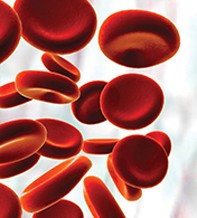Peer Reviewed
Feature Article Gastroenterology
Diagnosis and evaluation of iron-deficiency anaemia
Abstract
The diagnosis of iron-deficiency anaemia should initiate investigation into the cause. Gastrointestinal bleeding is the most common cause in men and postmenopausal women, and endoscopic evaluation of patients with iron-deficiency anaemia is useful.
Key Points
- Iron-deficiency anaemia is a common condition that is usually identified by the presence of microcytic, hypochromic red cells and characteristic abnormalities of iron studies.
- A low serum ferritin level is the most specific serological marker of iron deficiency but it may be elevated in patients with inflammation, liver disease or malignancy.
- Faecal occult blood testing (FOBT) is a useful screening test for colon cancer in asymptomatic patients but is rarely useful in the setting of iron-deficiency anaemia.
- Initial endoscopic evaluation of patients with iron-deficiency anaemia includes gastroscopy with small bowel biopsy and colonoscopy.
- In one-third of patients no cause for iron-deficiency anaemia is found on gastroscopy or colonoscopy and for these patients capsule endoscopy is available on the Pharmaceutical Benefits Scheme within six months of these negative tests.
- Iron deficiency in the absence of anaemia is less likely to have a sinister gastrointestinal cause.
- Oral iron supplementation is generally well tolerated by patients, and absorption and haematological response are improved by concurrent administration of vitamin C and folate, respectively.
Purchase the PDF version of this article
Already a subscriber? Login here.

